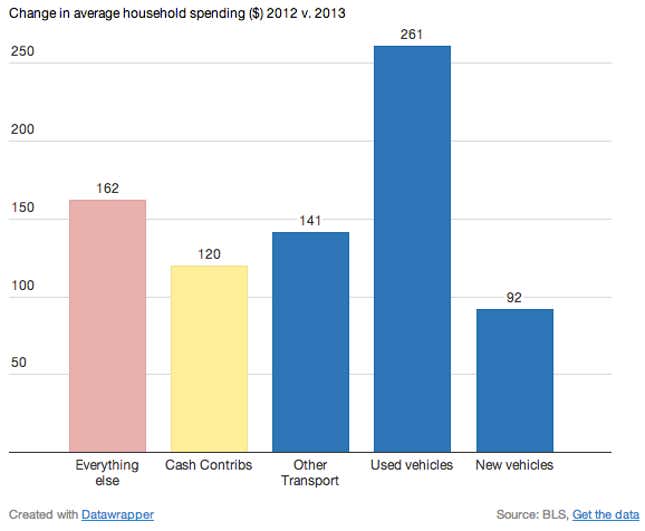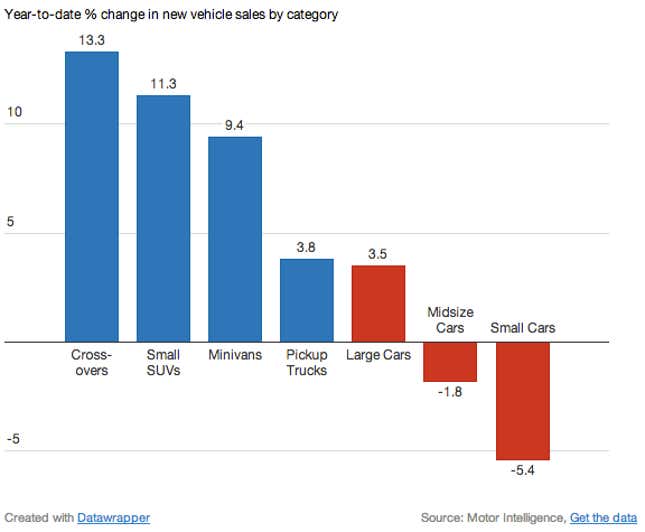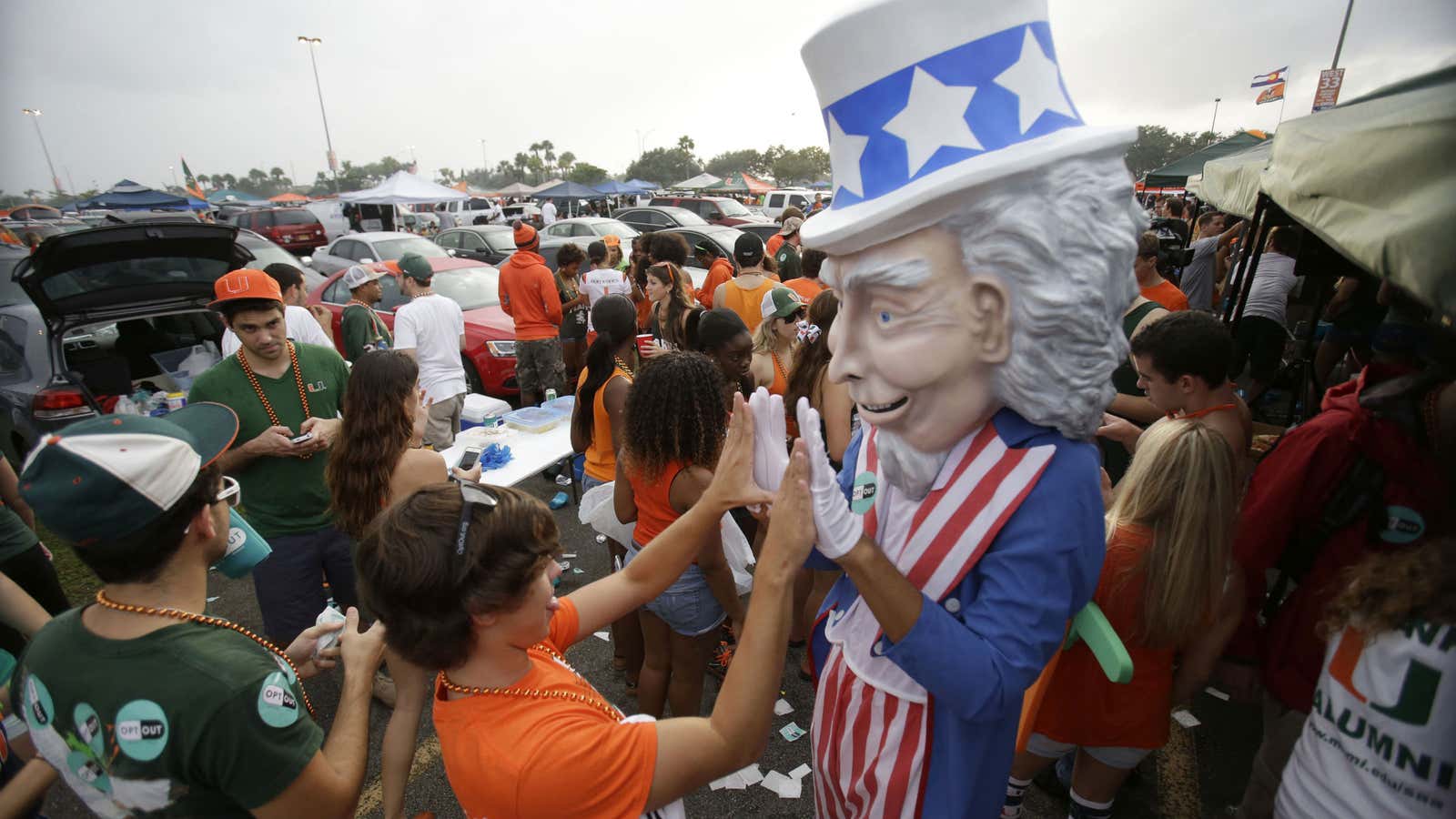The US economy is growing limply, as it has for years. If it weren’t for trucks, we might scarcely be growing at all.
The average household spent $51,400 in the last year—about $800 more than the previous 12 months—and higher spending in one sector made up most of the difference. It wasn’t our anxious health care industry, or our enormous housing market, or even necessities like food and clothing. It was higher spending on transportation—mostly on new and used vehicles—that accounted for 60% of all additional dollars spent by households over the last year, according to the Bureau of Labor Statistics.
Here’s a look at where the higher average household spending came from in the 12 months before July 2013 (compared with the 12 months before July 2012). It’s pretty much all transportation and cash contributions, the latter a catch-all category that notably includes financial support for college students.

New and used vehicle sales are on fire. But domestic car sales are down 6%. How that can make any sense?
It turns that Americans are over cars. They’re buying trucks, instead.
Domestic and imported truck sales are up 8% in 2014, and they account for more than 100% of all new vehicle purchases, off-setting the decline in new cars. (The used-vehicle market seems to skew slightly toward smaller durable cars, but it’s hard to find great data.) Some smaller models, like the Toyota Camry and Hyundai Sonata, are outselling last year. But overall, bigger is selling better across the board.

Transportation accounts for about 17% of your typical household’s budget, whether you’re in the bottom quintile, the top quintile, or smack dab in the middle. It’s a funny category where Americans seem to spend about a sixth of their new income on getting around, no matter where they are in the income distribution. It’d be nice if some of this spending were shifting to public transit, but as we’ve written, the overwhelming majority of Americans still get to work in their cars and trucks and carpooling is still quite rare. Only about 6% of transportation spending goes to public transit.
But maybe we shouldn’t root for Americans to switch over to trains and buses too quickly. More than half of new spending in the last year came from a transportation category that might be shrinking if it weren’t for new and used trucks, the gas required to power them, and the insurance and repairs required to support them. The future might be green, urban, and carless. But for now, we love our behemoths. And we need them, too.
This post originally appeared at The Atlantic. More from our sister site:
How a simple bag is rescuing the world’s black-eyed peas
Why do most black and latino students go to two-year colleges?
